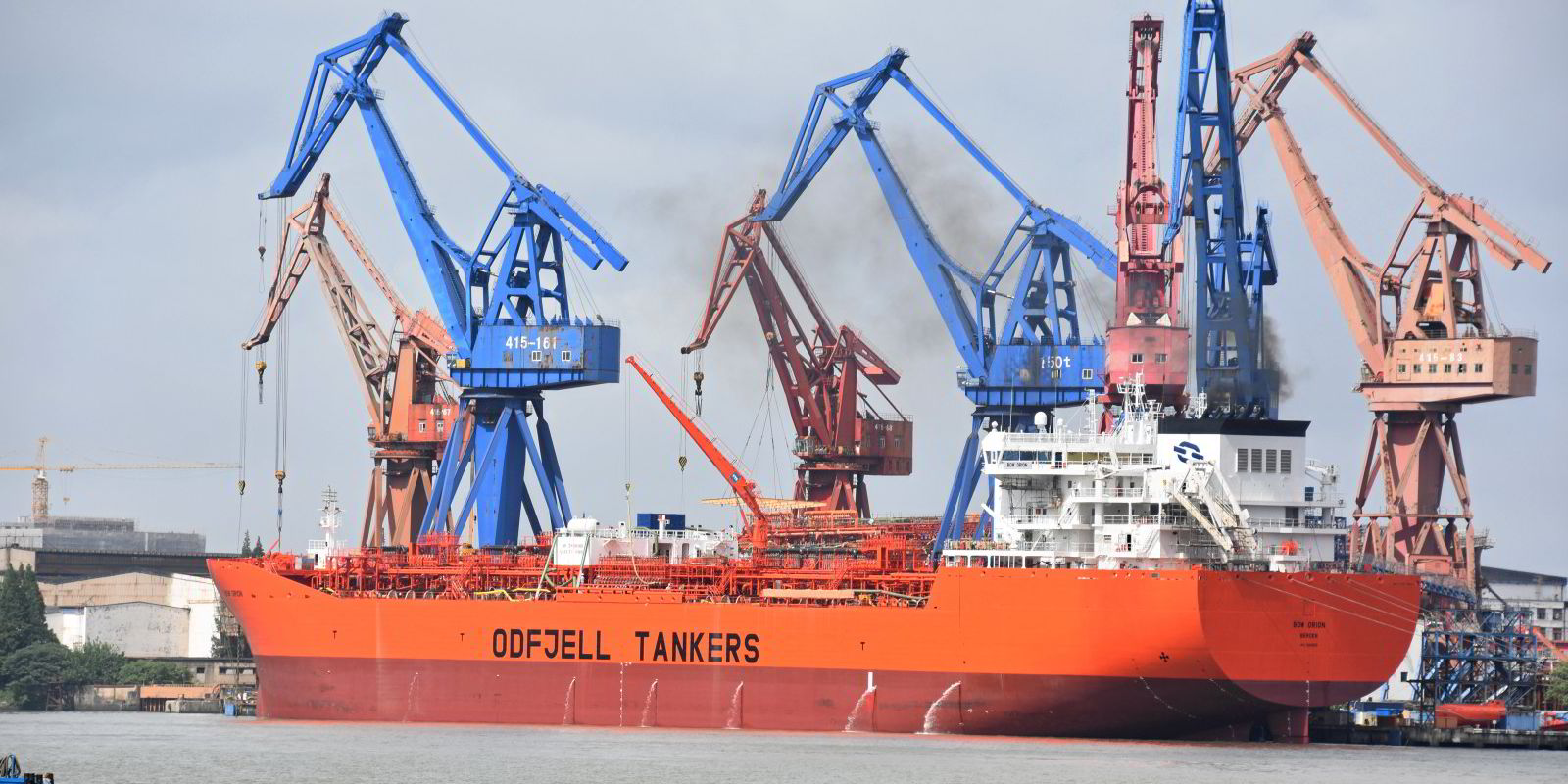Chemical tanker owner Odfjell has exercised the right to buy back five vessels on lease to further reduce its leverage and the break-even rate of its fleet.
The Oslo-listed shipowner did not identify the vessels involved or how much money would be saved by the transaction, but it did say it intends to refinance the vessels in the bank market prior to year-end.
Odfjell currently has 13 vessels on lease, according to its latest fleet list.
The Harald Fotland-led shipowner also disclosed that it had entered into four new long-term time charters of 25,000-dwt stainless steel vessels.
The identity of the shipowner was not revealed, but it fits Odfjell’s strategy of chartering in Japanese newbuildings.
Odfjell said this means it now has a total of eight 25,000 dwt stainless steel tankers under construction that will enter its fleet between now and 2025.
The first of the eight newbuildings was delivered on long-term time charter in September and the second is due to be delivered in November.
Two further vessels are expected within the first half of 2023, and the last four will be delivered in 2024-2025.
News of the fleet changes came as the shipowner reported a third-quarter net profit of $50.2m reversing a year-ago loss of $25.3m.
Odfjell said the chemical tanker market continued to improve in the third quarter despite what normally is a seasonally slower quarter.
“We continue to perform well both operationally and commercially, capturing the ongoing momentum in our markets,” said Odfjell chief executive Harald Fotland.
“The improved cash flow generation enables us to strengthen our balance sheet and also secures attractive returns to our shareholders.
“We expect continued strong spot rates across most trade lanes and foresee slightly improved TCE results in the fourth quarter of 2022,” he added.
Looking ahead, Odfjell said the economic downturn is expected to be countered by the European energy crisis where it expects a scale-down of production paving the way for increased imports.
It also expects low-cost chemical producers to gain further advantage and increase their market share, which supports the shipping market through longer distances.
Volatility and current production problems for high-cost producers will also lead to increased arbitrage opportunities and stimulate trade, Odfjell added.
The shipowner said the chemical tanker orderbook remains at low levels and it continues to see limited appetite for new orders considering the elevated newbuilding prices and uncertainties related to future propulsion systems.
“Normally, in a strong market, we expect increased speeds for the chemical tanker fleet, but this is now expected to be capped due to environmental regulations,” Odfjell said.
“The supply dynamics in the neighbouring crude and product tanker market remains favourable, which should continue to keep swing tonnage away from the chemical tanker market, and therefore be a material driver for a tight supply balance in the years to come.
“The market is expected to remain very strong in the short-term and we expect tonne-mile demand to surpass fleet growth the next three years, leading to a strong chemical tanker cycle in this period,” the shipowner added.





